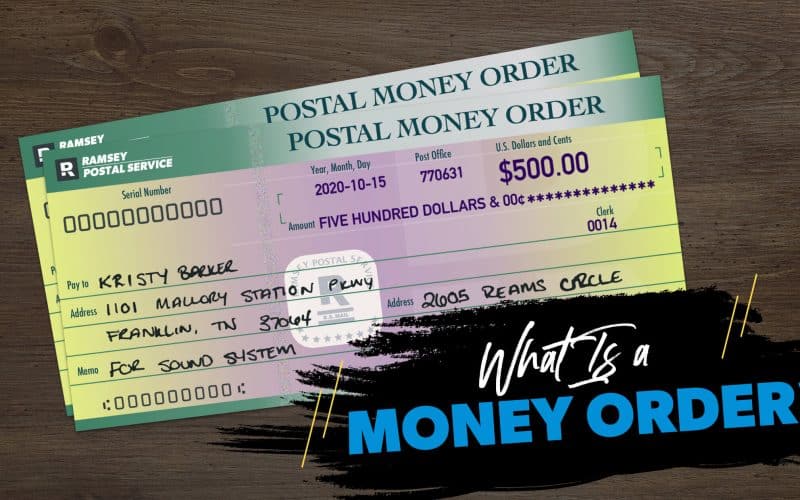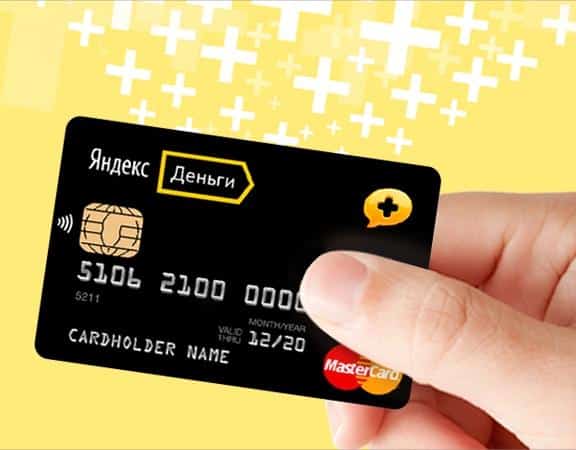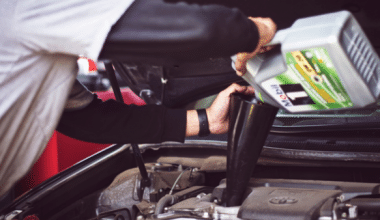As opposed to buying money orders with credit cards, using debits cards and cash are always a safer option. So short answer, Yes, you can buy money orders with debit cards. But the more important question should be, how do I go about this rightly? Well to answer that question, we will have to first, go through how money orders really work.
How do Money Orders Work?
You probably don’t pay for services or goods with money orders very often; instead, you probably use cash, a credit card, or a debit card as your primary means of payment. However, there might be times when you need to use a money order, such as when you need to transfer money abroad or deliver a payment without fear of being exposed to fraudulent activity, or when you don’t want to risk a personal check bouncing.
Money orders, like paper checks, are distributed in the form of a paper document and are used to pay for goods and services. If you want to buy a money order, you must pay for it in advance. As a result, money orders guarantee that the recipient receives their payments. If you receive a $100 money order, for example, you can deposit it at your bank or take it to a financial institution to exchange it for cash. Furthermore, unlike a check, which is backed by your personal bank account, a money order is backed by an entity or large company. In other words, it is a more convenient method of payment for the receiver.
But here’s another question you should ask, Is this the best payment method for me? I will answer this question by showing you how other alternatives besides money orders work.
How other Alternatives Besides Money Orders Work
Let’s take a look at two different possibilities. With these you can decide if this actually the best option for you while accumulating more understanding on how money orders work.
Money Order
Money orders are essentially the same as cash. Since they’re prepaid, they’re less likely to bounce than personal checks. Money orders are a good option for paying small bills (like utilities or cable), making small transactions under $1,000, and sending money to family and friends since they are usually capped at $1,000.
Personal check
Personal checks, unlike money orders, are not pre-paid. When you write a check, you are agreeing to pay a certain sum of money to a person or company. When the receiver cashes or deposits the check, money is taken from your bank account. If you don’t have enough money in your account to cover the check’s value, it won’t be processed, and the recipient won’t be credited, which may result in additional fees for you. Furthermore, passing a bad check is against the law, so make sure you’re not writing a check thinking you won’t be able to cover it. Checks can be used for larger transactions and cases where assured reimbursement is not needed because they are not capped at a certain dollar sum.
Cashier’s check
A financial institution, such as a bank or credit union, issues this form of check, not an entity. Unlike a personal search, the financial institution ensures that the funds are available. If you need one, you must pay the check’s sum plus a service charge. For larger transactions that need assured funding, cashier’s checks are a good choice.
Why Would You Need to Purchase a Money Order?
You may be wondering why a money order is important if you have cash on hand. Here are a few of them.
Sending money via mail:
A money order is more secure than sending cash or a check if you need to deliver payment by mail. However, if you lose, it’s gone forever. With a money order, though, you might be able to postpone payment, but it would definitely be a lengthy process with extra fees. Money orders, unlike checks, do not contain confidential financial details that can be stolen.
Money is being sent to another country:
They make sending money internationally a lot easier. You could purchase a money order in one country and have your receiver cash it in another. However, that’s if the bank or credit union issuing the money order has locations in several countries. Foreign money orders are also available from the US Postal Service for a limited number of countries.
Most times, it is a requirement:
Most business owners choose not to carry huge amounts of money in their wallets. They may even refuse to accept a personal check because they don’t want to risk it being bounced. Money orders are a secure and reliable alternative to cash or personal checks in these cases.
How to fill out a money order
When you buy a money order, you pay the whole sum plus a small fee upfront. After you’ve double-checked the amount, fill in your name and contact details on the front of the money order, as well as the receiver’s name and contact information.
A memo line helps you to decide the purpose of the money order. The front of the check is then signed as if it were a personal check. Keep your receipt in case you need proof of payment or want to check on the status of your order.
The process of filling out a money order is fairly easy.
For starters, the following critical details must be included:
- Your name
- The recipient’s full name
- It’s possible that you’ll be asked for your address and phone number. Ask if this information is essential, especially if you want to keep your privacy.
- There could be a memo area where you can jot down notes.
- It’s possible that you’ll need to sign it.
What Is the Procedure for Cashing a Money Order?
You want to cash a money order, but don’t know how to go about it? Follow the steps below to get started:
- Look for a location that accepts money orders.
Money orders can be cashed at a variety of places. Some of which include Banks, convenience stores, and credit unions.
- Sign and date your money order
Make sure your money order is fully filled out. This means you would need to sign the money order when you arrive at the venue. Something you would do if this were a check.
- Present a valid ID
You will need to identify yourself in order to confirm if you will be allowed to cash the money order. So carry a government-issued ID like a driver’s license or passport.
- Pay your fees (if applicable)
You do not have to pay fees if you cash your money order at your bank. Otherwise, you can expect to pay a bill.
- You’re done!
Get your money and make sure it’s safe with you.
When Is It Appropriate to Use a Money Order?
In the following situations, a money order might be appropriate:
- The person receiving the funds does not want to risk receiving a bounced check.
- Payment may need to be canceled by the individual who issued it. For example, if you suspect the money order was stolen, you can stop the funds from being sent.
- You want to keep your personal information private. Money orders do not contain details about your bank account.
For the following reasons, you might want to use a money order instead of cash:
- You need a receipt to prove that you have made a payment.
- If you’re concerned about losing money (either misplacing it or having it stolen)
- If you have to pay a fee to withdraw money from an ATM.
How to Submit Money Orders Within the United States
The following steps are procedures you should follow each time you need to submit a money order within the US.
- Decide on the size of the money order. You can send up to $1,000 throughout the United States in a single order.
- Any Post Office will suffice.
- Money, a debit card, or a traveler’s check are all acceptable forms of payment. You will not be able to pay for a credit card.
- Fill out the money order with a store associate at the register.
- Pay the money order’s face value plus the issuing fee.
- Keep your receipt in case you need to track down your money order.
What Is the Best Place to Get a Money Order?
Money orders can be purchased at post offices, department stores (such as Walmart), banks and credit unions, grocery stores, and convenience stores, among other places. The cost of buying one varies depending on the size of the money order and where it is purchased. Most are less than a dollar and up to $5, with certain banks waiving the charge if you have some forms of accounts with them.
Is It Possible to Purchase a Money Order Over the Internet?
No, it’s not true. A money order is usually a paper document that must be ordered in person. To make a payment, it can be mailed or shipped. There are other services that allow you to move money over the internet.
How Does Buying a Money Order Work?
Money orders can’t go bad like a check can. You can buy a money order with cash or another form of guaranteed payment, like a debit card or traveler’s check. When you buy a money order, you must write the name of the payee (the person receiving the money) and the name of the bank that issued the order.
What Do I Need for a Money Order?
What is required to complete a money order:
- Name of the payee (i.e., the person being paid)
- The payee’s address.
- The amount of the payment.
- Your full name and address.
- The purpose of the payment and/or the billing account number.
In Conclusion
While purchasing a money order with a credit card is possible, debit cards or cash are often the best options it is almost never a good idea due to the additional fees and interest charges that will be incurred.
Proctor says, “I can’t think of a single good excuse to buy a money order with a credit card.” “In the vast majority of cases, you [consumers] can buy money orders using cash-based (e.g with debit cards ) methods.”







